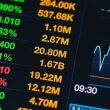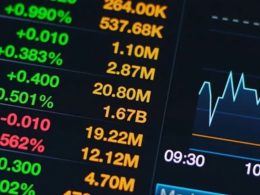by Brian Levitt, Global Market Strategist, North America, Invesco Canada
Rocky Balboa said, “You, me, or nobody is gonna hit as hard as life. But it ain’t about how hard ya hit. It’s about how hard you can get hit and keep moving forward. How much you can take and keep moving forward. That’s how winning is done.”
Investors are getting hit hard. The broad U.S. equity market, as represented by the S&P 500 Index, experienced a 30% bear market decline in the course of 23 trading days.1 That’s roughly 130 days faster than the typical bear market, dating back to 1900.2 The massive gains of 2019 disappeared between Valentine’s Day and St. Patrick’s Day.3 The instinct is to sell. Sit the rest of this out.
Yet, we can’t stop thinking about all we have learned of the follies of trying to time the market. We summon up the famous DALBAR study, and the analysis showing what happens if we miss the best days in the market (half of those days happen during a bear market4) and the research demonstrating that stocks, since 1945, have posted positive returns over 99% of the time over any 15-year period.5 We use a long-term historical perspective to adhere to the principles of sound investing, such as consistency and courage, to prevent us from making emotional decisions at potentially inopportune times.
But let’s not make this another commentary about not selling in extreme market environments. I owe a response to my friends, family, colleagues, and clients asking if it is time to buy. The history of the broad U.S. market teaches us that there has never been a “bad” time to buy the broad market (the line for the broad market has gone up over time), although there have certainly been “better” times to buy. First, let’s acknowledge that none of us can predict when the market will bottom. The number of new COVID-19 cases will likely need to peak before we get there. That’s a question for the epidemiologists to answer and a challenge for Americans and global citizens to take social distancing and/or isolation seriously. When that occurs, I think investors likely will awake to an environment in which equities are cheap relative to their own history and to bonds and there may be massive stimulus globally. We all may want to take advantage of that, but what if we’re too early? What if we are only halfway through this? Let’s look to history as a potential guide:
- We analyzed the peak to trough periods for six prominent bear markets (the Great Depression in 1929, the 1987 crash, the 1991 Gulf War, the 2001 Technology crash, and the 2008 global financial crisis), and made a hypothetical $100,000 investment into the broad market, represented by the S&P 500, at the exact mid-point of each of the drawdowns.
- For example, during the global financial crisis, the market peaked on July 19, 2007, and bottomed 413 trading days later, on March 9, 2009. Our hypothetical investment was made on day 207 in May 2008, prior to many of the worst days in the market experienced in Q4 2008 and Q1 2009. Our initial hypothetical $100,000 investment had fallen to $55,450 by the time the market bottomed in Q1 2009. Ouch! Ten years later it was worth $205,000. That’s a 7% per year return, notwithstanding the initial loss.6
- In fact, over the six major bear markets we observed, investors would have lost, on average, 38% between the midpoint and the bottom. 10-years later, an investor would have returned, on average 110% cumulatively from the midpoint of the drawdown.7 Who among us wouldn’t sign up, right now, for a potential doubling of our money in 10 years?
The adage says that time heals all wounds. History suggests that time in markets not only heals wounds but keeps us “moving forward” – even if we’re early.
This post was first published at the official blog of Invesco Canada.













